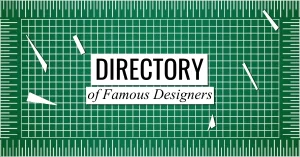Designing is not just about creating visually appealing and functional assets. It also involves managing relationships with clients. Effective management for design clients is crucial for professional success. This ensures smooth collaborations, timely payments, and mutual advantage. Furthermore, maintaining a good rapport could mean a returning client. In this blog post, we’ll explore the top tips for creatives to effectively manage design clients.
Make Sure the Client Has a History of Paying on Time
One of the key aspects of effective client management is ensuring that your hard work is duly compensated. Before entering into a contract or agreement, research the client’s payment history. Platforms like freelance websites often provide reviews and ratings, offering insights into a client’s payment behaviour. Working with clients who have a track record of paying on time reduces the risk of payment delays and contributes to a positive working relationship.
Ensure the Client Follows Rules for Best Practices
Establishing clear guidelines and best practices from the beginning sets the tone for a successful collaboration. Outline your expectations regarding communication channels, feedback processes, and project timelines. Clearly define your workflow and educate clients on the importance of adhering to these practices. This would mean a transparent and efficient working relationship. Also, this can reduce the likelihood of future misunderstandings.
Enlist the Deliverables and Number of Edits Clearly
Ambiguity in project scope and revisions can lead to misunderstandings and potential conflicts. Clearly outline the deliverables, specifying the format, size, and any other relevant details. Additionally, establish the number of included revisions or edits in your contract. This will enable both parties to have a clear understanding of the project parameters.
Measure Your Working Hours
For designers working on an hourly basis, accurate time tracking is paramount. Utilise time-tracking tools like “Toogl” to monitor the hours dedicated to each project. This not only ensures fair compensation for your efforts but also provides valuable data for optimising your workflow. Clear documentation of working hours fosters transparency and builds trust with clients.
Ensure That You Own the Intellectual Property Rights
Intellectual property rights are a crucial aspect of any design project. Clearly define the ownership of the final designs in your contract. While clients typically retain usage rights, securing your intellectual property rights ensures that you can showcase the work in your portfolio and unequivocally claim that you are the creator. This clarity safeguards both parties’ interests.
Follow Ethical Licensing
Understanding licensing agreements is vital for designers, especially in industries where licensing plays a significant role. Clearly define the terms of use for your designs, specifying whether the client has exclusive or non-exclusive rights. Ethical licensing practices protect your work and prevent potential legal issues down the line.
Read the full post about copyright and creative licensing HERE
Allowance for Social Media and Portfolio Announcements
Celebrating successful collaborations benefits both designers and clients. Include clauses in your contract that allow you to share the project on your portfolio and social media channels. This not only serves as a testament to your skills but also provides valuable exposure for your client. Ensure that the client is comfortable with this arrangement before proceeding.
Effective client management for design clients is a cornerstone of a successful creative career. By implementing these tips for designers to effectively manage clients, you can navigate client relationships with confidence. Also, you can facilitate fair compensation, transparent communication, and positive collaborations. Building strong client relationships not only enhances the designer’s professional reputation but also contributes to a thriving and sustainable creative career.







0 Comments